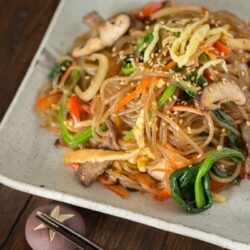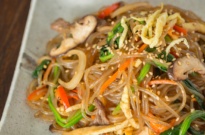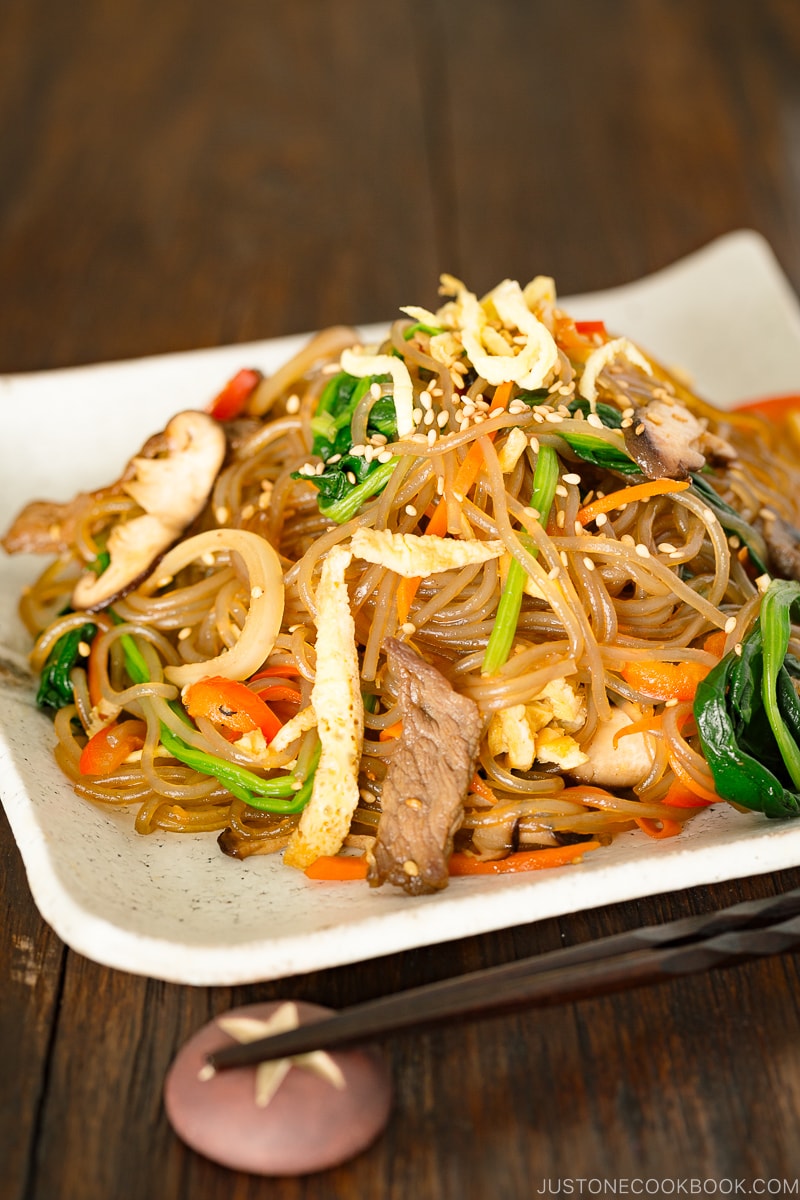
If you’re a Korean food lover, japchae needs no introduction. With chewy glass noodles, thin silvers of colorful vegetables, julienned omelet, mushrooms, and meat all on one plate, this famous Korean noodle dish might just be the perfect food.
This japchae recipe is the result of my YouTube collaboration with my good friend Seonkyoung Longest, who is a Korean-born celebrity chef. We’ll show you all the tips and tricks on how to make the best japchae at home.
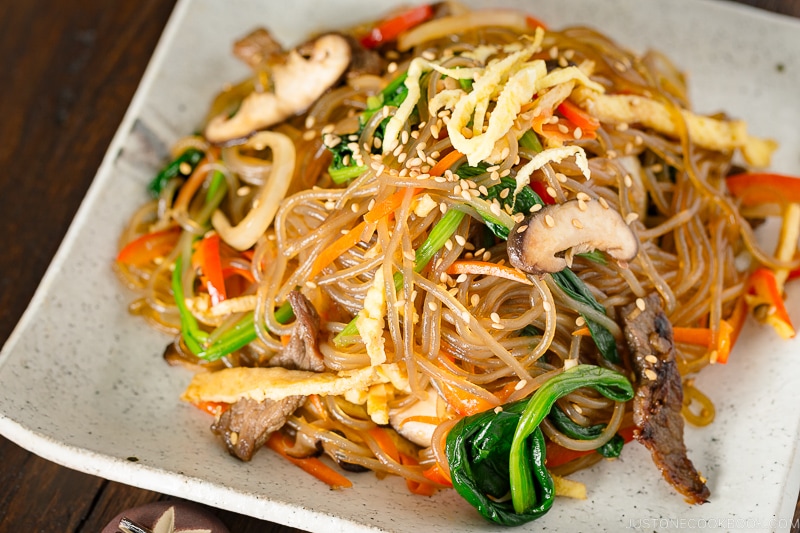
What is Japchae?
Japchae (잡채 – or chapchae) is a classic Korean stir-fried noodle dish seasoned with a sweet and savory sauce. The name japchae describes a mix of finely cut ingredients—vegetables, egg, mushroom, and meat—that are included in the noodles.
According to Seonkyoung, Korean cuisine shares the same philosophy as Japanese cuisine where the balancing of colors and seasonality are taken into consideration. The juxtaposition of flavors and textures and the vibrant colors are all part of the appeal of a recipe like japchae.
As one of Korea’s most-loved dishes, not only can you find japchae being served at small parties, fancy banquets, and special occasions like New Year’s day, but it is also a staple dish enjoyed any day of the week.
In Korea, people enjoy japchae hot, warm, or even at room temperature, because it is delicious regardless of how you serve it.
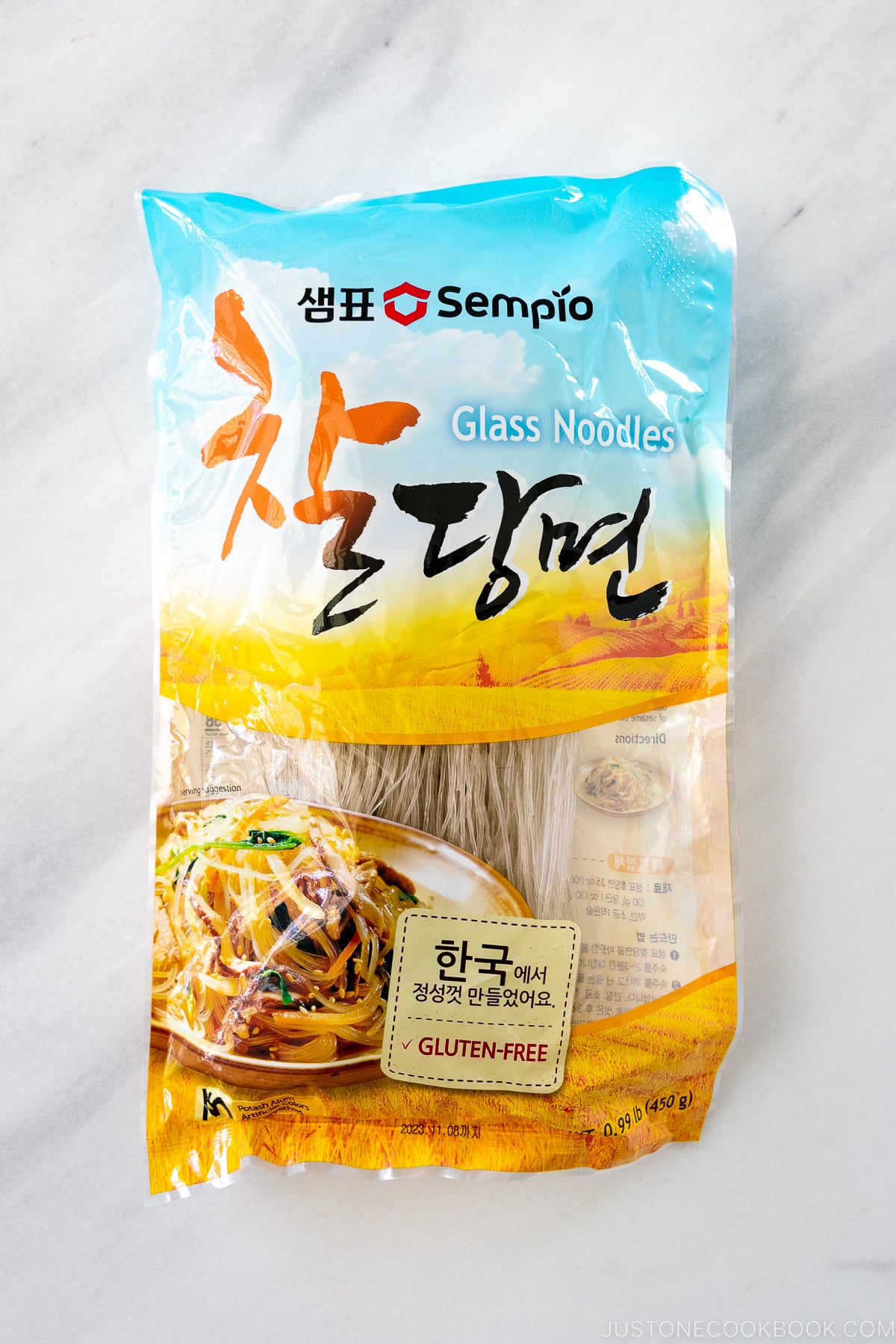
What Are Korean Sweet Potato Glass Noodles (Dangmyeon)?
Korean sweet potato glass noodles called dangmyeon (당면) are made from the starch of sweet potatoes. They do not contain wheat so they are gluten-free.
The noodles are stiff and grayish looking and often sold dried in a big bag. Once cooked, they become translucent and tender. They also come in long strands, so you’ll need to cut them in half or thirds after cooking.
You can buy Korean sweet potato glass noodles in Korean or most Asian grocery stores. Amazon and other online Asian grocers also carry them too.
Learn more about dangmyeon in my pantry post.
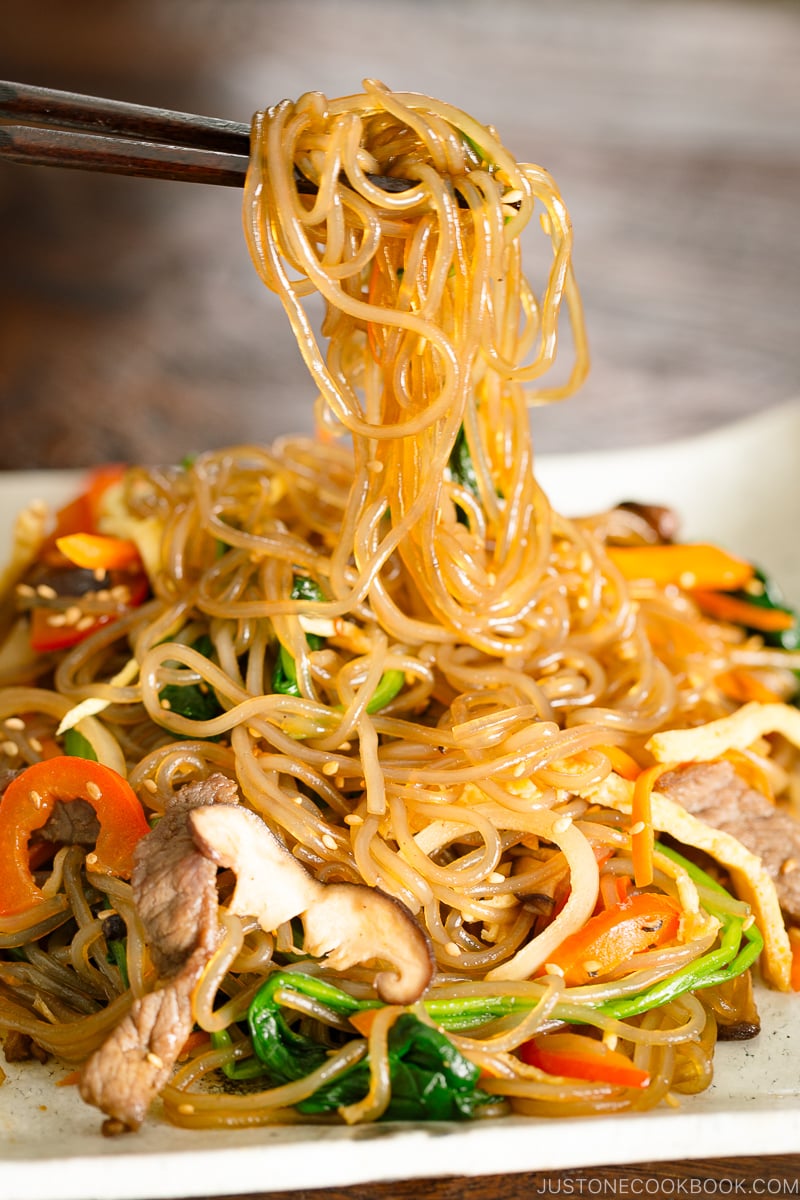
How to Make Japchae
You’ll need to do some prep work to get all the ingredients ready, but apart from that, japchae is a relatively easy dish to put together. The noodles store well in the refrigerator for a day or two and reheat easily, so you can definitely make it in advance.
Ingredients You’ll Need
- Korean sweet potato glass noodles (dangmyeon): These springy glass noodles are an integral component of japchae. Please do not substitute it with other types of glass noodles. It will change the character of the dish. The good news is you can easily find sweet potato noodles in Korean or Asian grocery stores or online.
- Vegetables: We used onion, carrots, bell peppers, and spinach in the recipe.
- Shiitake mushrooms: If you cannot find shiitake mushrooms, sub with other meaty types of mushrooms.
- Eggs: You make a thin omelet and cut it into thin strips. You can leave it out for a vegan japchae.
- Protein: We used thinly sliced beef, but you can leave it out or swap it with seafood, tofu, or use more shiitake mushrooms.
- Roasted sesame oil: It adds an unmistakably wonderful and nutty aroma to the dish. Use generously.
- Japchae sauce: Korean soy sauce*, sugar, sesame oil, sesame seeds, garlic, and black pepper.
*Korean soy sauce is best, but you can sub it with Japanese soy sauce.
Overview: Cooking Steps
- Cut all the ingredients into julienne strips. It’s important to thinly slice all the ingredients into a uniform shape so they mix well with the long noodles. That way when you eat, the veggies, eggs, and meat will cling to the noodles and have more balanced flavors.
- Stir fry, blanch, and cook each ingredient separately. Each ingredient has a different texture and it requires a different cooking time, so we need to cook them separately. Stir-frying everything all at once in the frying pan will only result in uneven textures as some vegetables will wilt before the others are cooked. Cooking separately also helps keep the colors of each ingredient nice and bright!
- Mix all together! After everything is prepared and cooked, place the ingredients in a large platter or bowl, then pour the sauce over the noodles first and let them absorb the flavors. Once the noodles are well coated, get ready to mix! We’ll do the traditional Korean way by putting on plastic gloves and tossing the noodles with everything else together.
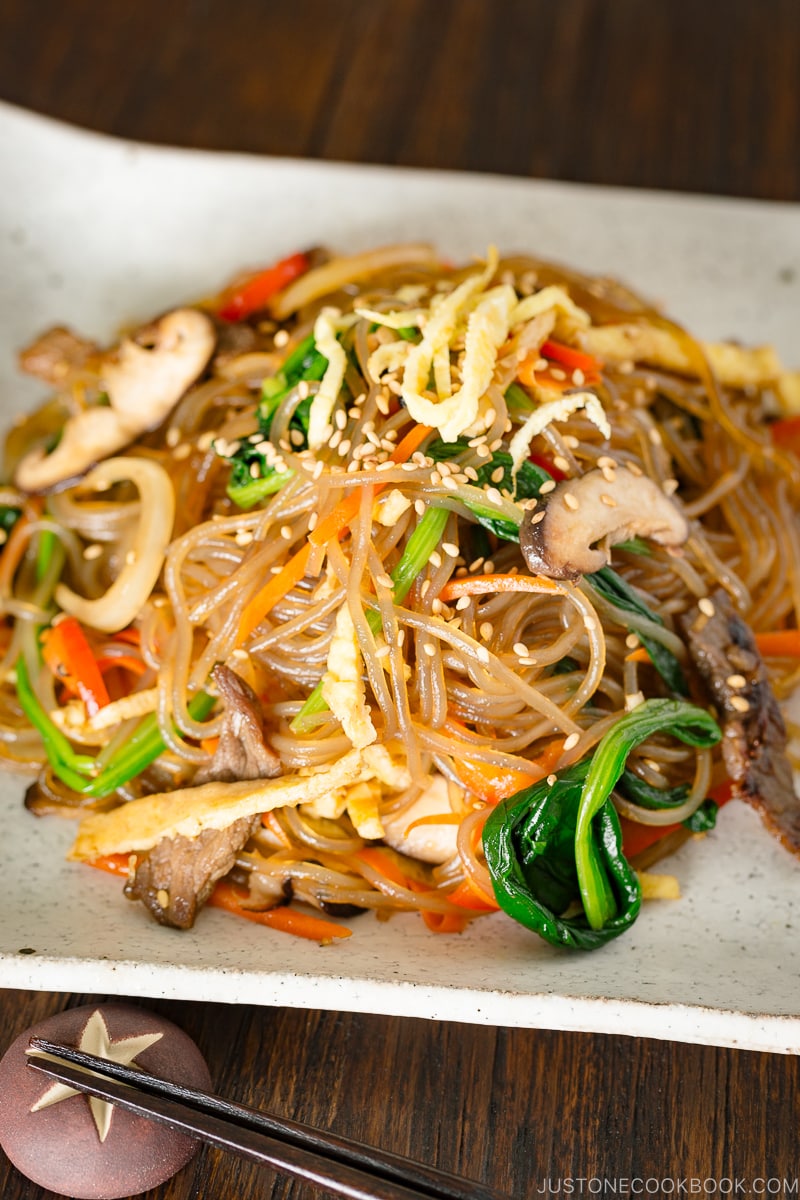
What Dishes to Serve with Japchae
I love that you can enjoy japchae in any way you like. It certainly makes a fulfilling standalone meal itself. For a party, you can serve it on a large platter directly as the main dish on the table, or as a smaller side (banchan) along with other dishes.
Here are some of our favorite recipes that go well with japchae:
- Quick Korean Fresh Kimchi
- Korean Pancake
- Gluten-Free Korean Veggie Pancake
- Kimchi Jjigae (Kimchi Stew)
- Kimbap (Korean Seaweed Roll)
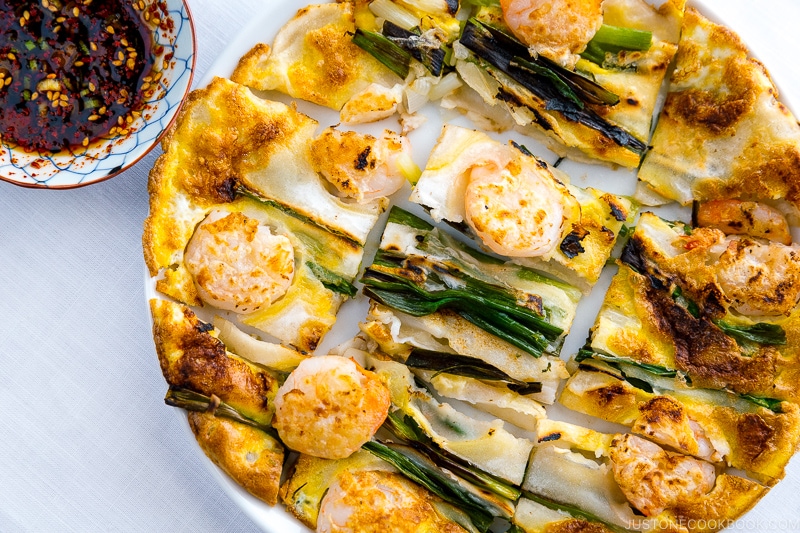
More Korean Recipes
If you enjoy Korean cuisine, please visit Seonkyoung at her website and YouTube channel. She’s a gem and I know you’ll love her!
Last but not least, I wanted to thank Seonkyoung for collaborating with me to make this amazing recipe video for JOC readers. This has been a fun and enriching experience, and we both hope that you enjoy watching our video and making japchae with us.
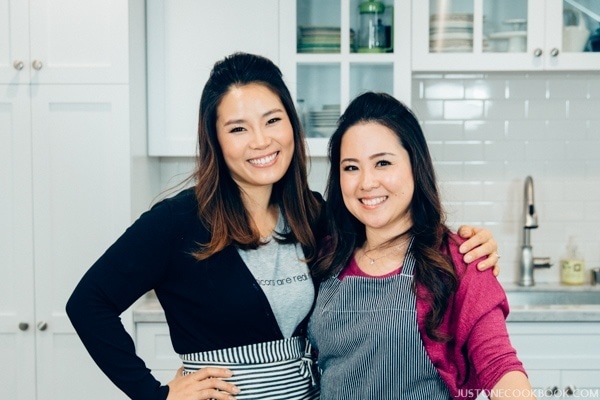
Wish to learn more about Japanese cooking? Sign up for our free newsletter to receive cooking tips & recipe updates! And stay in touch with me on Facebook, Pinterest, YouTube, and Instagram.
Japchae (Korean Stir-Fried Noodles)
Ingredients
For the Beef
- 1 Tbsp Korean soy sauce (or use Japanese soy sauce)
- 1 Tbsp sugar
- ½ Tbsp toasted sesame oil (for marinating the beef)
- ½ Tbsp mirin
- 1 clove garlic (chopped)
- ½ lb beef (sirloin or chuck; skip for vegetarian)
- 1 Tbsp toasted sesame oil (for cooking the beef, as needed)
For the Eggs and Vegetables
- 2 large eggs (50 g each w/o shell) (lightly beaten)
- toasted sesame oil (for cooking the eggs and vegetables, as needed)
- ½ onion (4 oz, 114 g)
- Diamond Crystal kosher salt (to season the vegetables, as needed)
- 5 shiitake mushrooms
- ½ carrot (1.5 oz, 43 g)
- ¼ red bell pepper
- 12 oz fresh spinach (about 1 bunch)
For the Noodles
- 14 oz Korean sweet potato glass noodles (dangmyeon)
- toasted sesame oil (for coating the cooked noodles, as needed)
For the Sauce
- ⅓ cup Korean soy sauce (or use Japanese soy sauce)
- ⅓ cup sugar (or honey)
- 2 Tbsp toasted sesame oil
- 1 Tbsp toasted white sesame seeds
- 1 clove garlic (chopped)
- freshly ground black pepper
For Assembling the Japchae
- toasted white sesame seeds (as needed)
Instructions
- Gather all the ingredients.
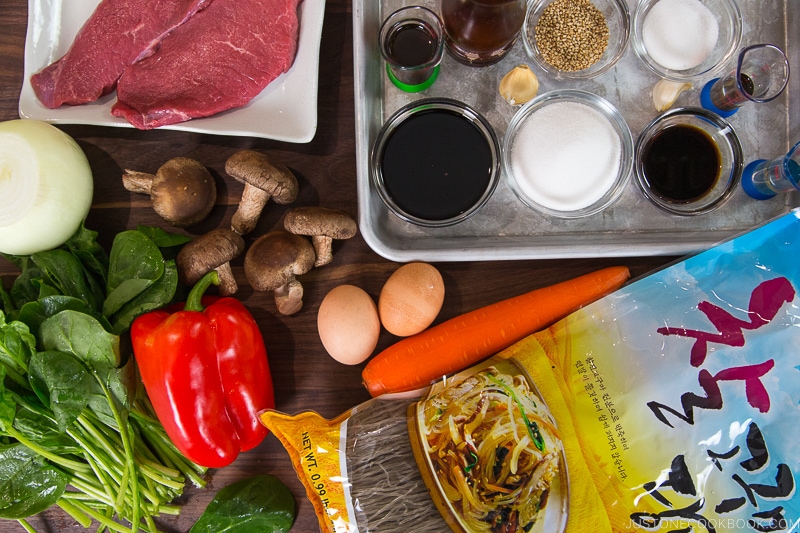
To Marinate the Beef
- In a medium bowl, combine the seasonings for the beef: 1 Tbsp Korean soy sauce, 1 Tbsp sugar, ½ Tbsp toasted sesame oil, ½ Tbsp mirin, and 1 clove garlic (chopped). Whisk it all together. Cut ½ lb beef into thin strips 3 inches (7.6 cm) long. Add the beef to the bowl with the sauce and toss to coat evenly. Set aside to marinate for at least 10 minutes.
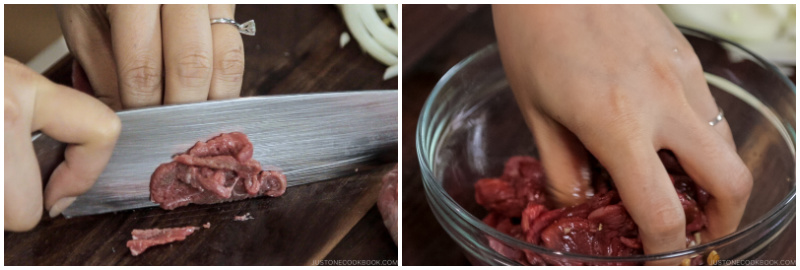
To Cut the Vegetables
- Thinly slice ½ onion and 5 shiitake mushrooms.
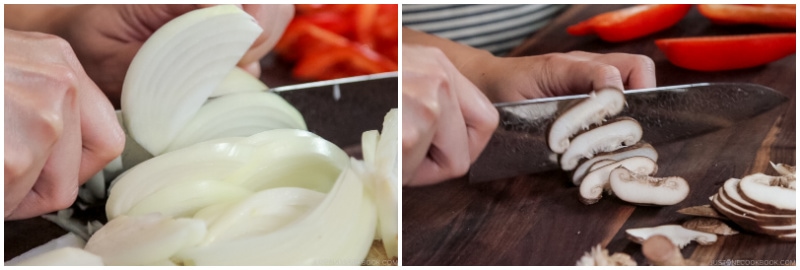
- Cut ½ carrot and ¼ red bell pepper into thin julienne strips.
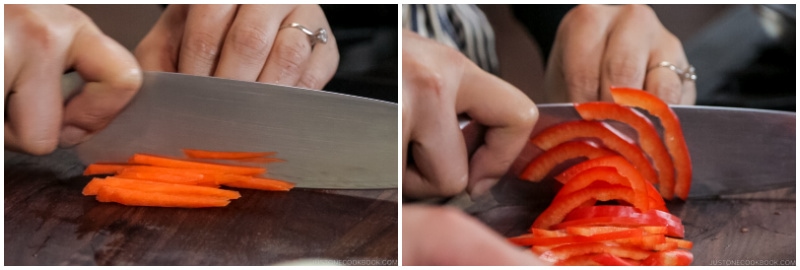
To Cook the Toppings
- Now, make the omelette. (If doubling the recipe, make 2 omelettes with 2 eggs each.) Heat a large frying pan on medium heat. When the pan is hot, add 1–2 tsp toasted sesame oil and distribute it evenly in the pan (use less for a nonstick pan, more for a regular pan). Next, beat and add 2 large eggs to the pan and swirl them around to cover the pan‘s surface in a thin layer. Cook until it’s just set, about 2 minutes. Then flip the egg over and cook for another 2 minutes. Transfer the omelette to a plate to let cool.
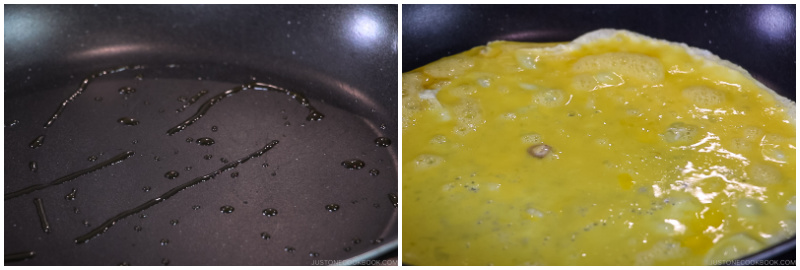
- Next, we‘ll cook the vegetables. Make sure to cook each different vegetable separately, starting with the light-colored ones and ending with the dark-colored ones, so that they will retain their beautiful colors. In the same pan that you just used (without washing), heat 1–3 tsp toasted sesame oil over medium heat. Add the sliced onions and a pinch of salt and sauté until tender. Remove the onions from the pan to a platter large enough to eventually hold all the cooked ingredients.
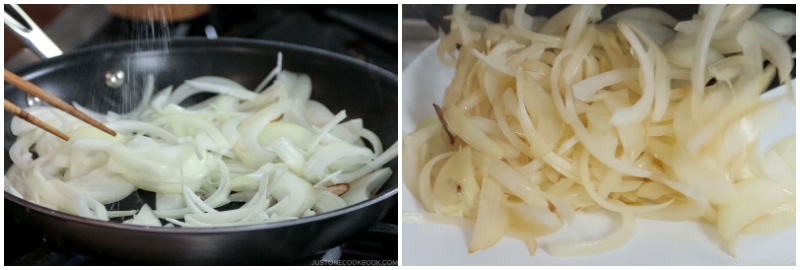
- In the same pan, repeat this process with the shiitake mushrooms next, followed by the carrot strips, and ending with the bell pepper strips. As you finish cooking each ingredient, place in a separate pile on the platter.
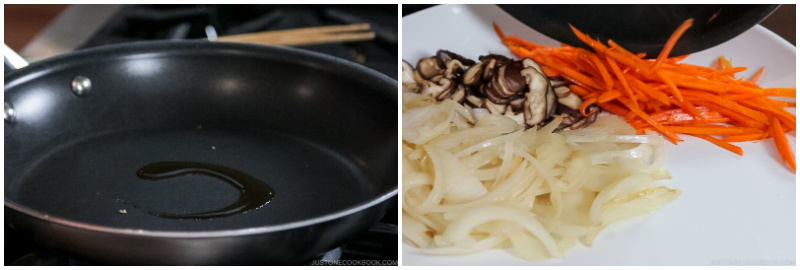
- Now, cook the beef. Using the same pan over medium heat, heat 1–3 tsp toasted sesame oil and add the marinated beef and sauté until cooked through and all the moisture has evaporated. Transfer from the pan to the large platter with the cooked vegetables.
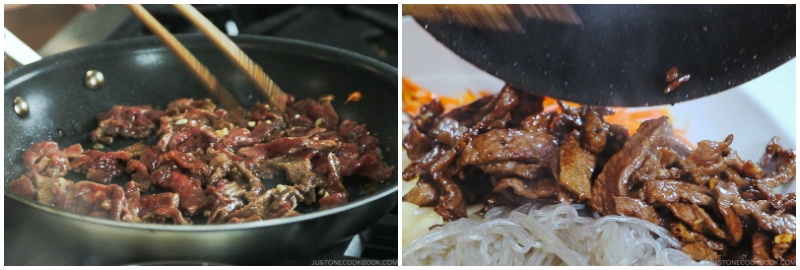
- When the omelette is cooled, roll it up and cut it into thin ribbons. Set aside on a separate plate.
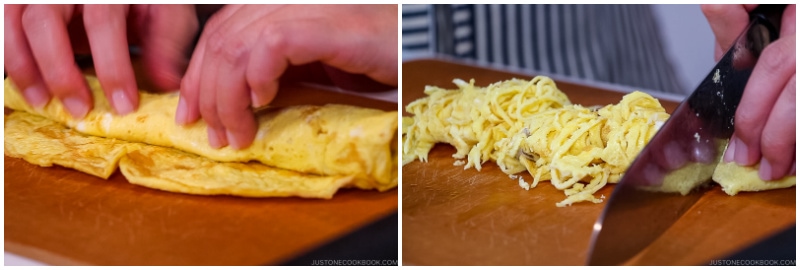
- Bring a large pot of water to a boil. In the meantime, prepare a large bowl of iced water. Once the water is boiling, add 1 tsp Diamond Crystal kosher salt and 12 oz fresh spinach. Cook for about 10–15 seconds (American spinach is more tender than Japanese spinach). Use tongs or chopsticks to transfer the spinach from the pot to the iced water to stop the cooking. (You‘ll cook the noodles next in this boiling water, so do not discard it.) Gather the spinach and squeeze out as much water as you can. Add the spinach to the platter with the other cooked ingredients.
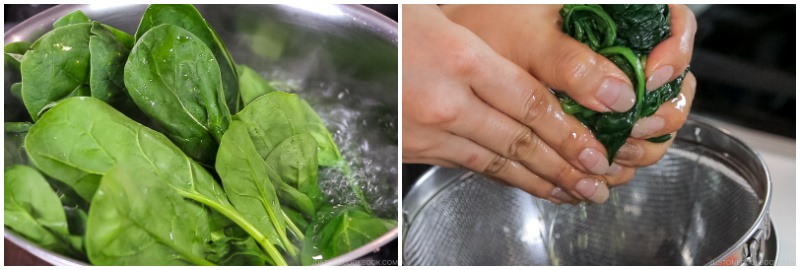
To Cook the Noodles
- Add 14 oz Korean sweet potato glass noodles (dangmyeon) to the same boiling water that you used to blanch the spinach. Boil the noodles according to the package directions, about 6 to 10 minutes. Drain well, transfer to a bowl, and toss with some toasted sesame oil to coat so the noodles don‘t stick to each other. Cut the long noodles with kitchen shears so it‘s easier to eat and they‘ll mix easily with the sauce and toppings. Then, add the noodles to the platter in a pile next to the rest of the cooked ingredients.
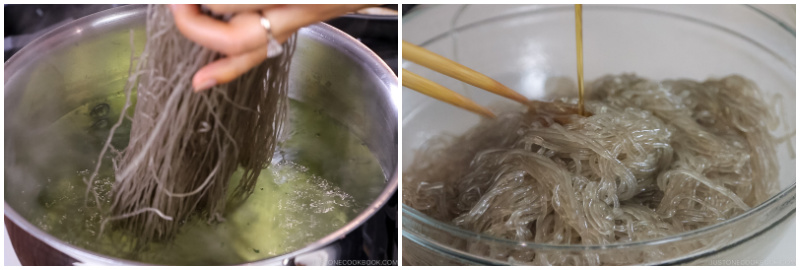
To Assemble the Japchae
- In a small bowl, combine all the ingredients for the sauce: ⅓ cup Korean soy sauce, ⅓ cup sugar, 2 Tbsp toasted sesame oil, 1 Tbsp toasted white sesame seeds, 1 clove garlic (chopped), and freshly ground black pepper. Whisk well. Pour the sauce only on top of the noodles.
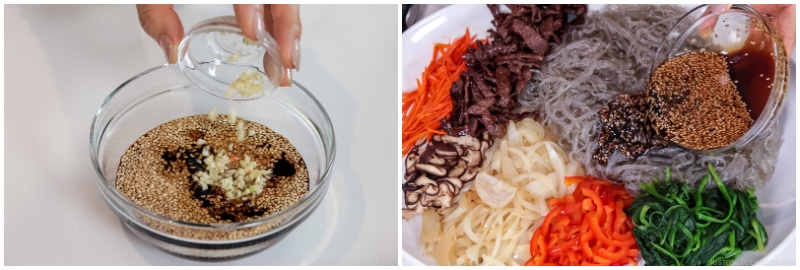
- Combine the sauce and noodles first so that the noodles can absorb the sauce (I used my gloved hand). Once the noodles are well coated, add in the stir-fried vegetables and beef and mix everything together.
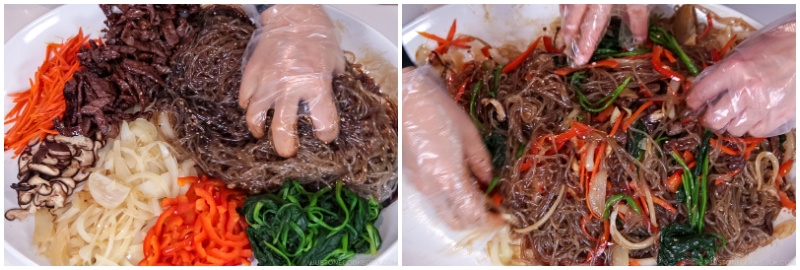
- Finally, add half of the omelette ribbons and some sesame seeds and toss together. Transfer to a serving platter and garnish the Japchae with the rest of the omelette ribbons and more toasted white sesame seeds, as desired. Serve warm or at room temperature. Enjoy!
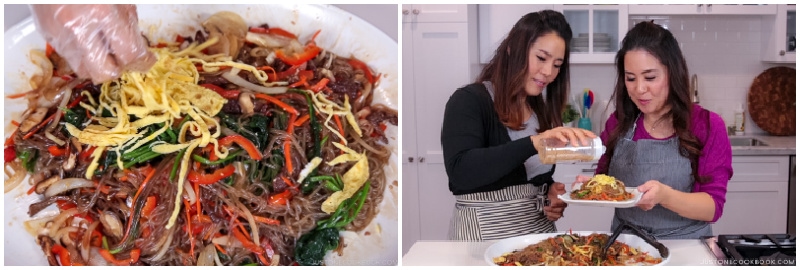
To Store
- You can keep the leftovers in an airtight container for up to 2 days. When you are ready to serve, reheat it in a frying pan with 1–3 tsp of oil and 1–2 Tbsp of water until the noodles become translucent again.
Notes
Nutrition
Did you make this recipe?
Tag @justonecookbook on Instagram so we can see your delicious creation!
Editor’s Note: This post was originally published on February 5, 2016. The post has been updated with more information in August 2022.


